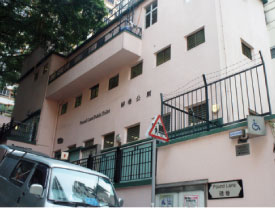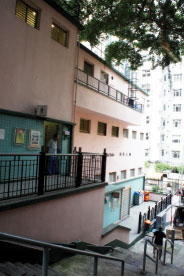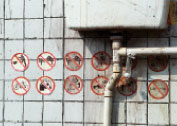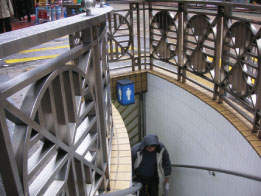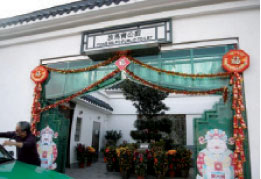How the public toilet changed Hong Kong
Updated: 2012-08-30 06:57
By Christopher Dewolfe(HK Edition)
|
|||||||
|
In 1904, after an outbreak of bubonic plague, Hong Kong's first public toilet and bathhouse was opened on Pound Lane, with space for 28 men and 10 women. Mok Kwok-cheong / China Daily |
In 1894, bubonic plague claimed 3,000 lives in the tenement district of Tai Ping Shan. Alarmed by the outbreak, British authorities introduced public sanitation to the Chinese settlements of Hong Kong, constructing a network of public toilets, changing the living conditions for thousands of people. Christopher Dewolfe reports.
Hong Kong was not a healthy place in the late 19th century. For decades after the British founded the colony in 1842, the Chinese settlement of Sheung Wan struggled with overcrowding and chronic disease.
Things were especially bad in Tai Ping Shan, a hillside enclave of tenement houses packed with coolies who worked as manual laborers. In 1881, the colonial government hired Oswald Chadwick, a British engineer, to conduct a survey of the district's homes. He was alarmed by what he found. In some buildings, 80 tenants crammed into a single flat. People shared space with chickens and pigs. Drains were built haphazardly, so they clogged and became septic, toxic sludge leaking into the surrounding soil.
Chadwick was particularly appalled by the way human waste was handled. "As a general rule throughout Hong Kong, in accordance with time-honored Chinese practice, human excrete are removed by hand, on what may be called the 'pail' system," he wrote in his report, which was published in 1882. "Neither deodorisation or disinfection of any kind is attempted."
By contrast, the homes in Hong Kong's European districts were well-equipped with water closets attached to municipal drains. Such luxuries were not afforded to the fast-growing Chinese population, which was limited to cramped quarters like Tai Ping Shan because land use laws prohibited the expansion of tenement housing - a strategy used by the colonial government to keep the European and Chinese populations apart.
Public facilities were non-existent. Entrepreneurs took advantage of the situation by building public latrines - just 25 for a population of more than 100,000 - from which they made a hefty profit by selling human excrement as fertilizer. "On the whole the existing latrines are offensive and a nuisance, both as to position and construction, and they are so crowded as to render improvements to maintenance very difficult," wrote Chadwick.
|
One toilet that is not slated for renovation can be found on Pound Lane. After 108 years, the site could be cleared to make way for a new outdoor escalator link. Mok Kwok-cheong / China Daily |
Until then, nobody had made a direct link between Hong Kong's filth and any outbreak of disease, but Chadwick suggested that an epidemic of some sort was inevitable. "He predicted that if there was an outbreak, it would be a disaster because sanitation was so bad," says Lau Kwok-wai, executive director of the Conservancy Association Centre for Heritage, which specializes in the history of Western District. "He was right."
In 1894, an outbreak of bubonic plague killed more than 3,000 people in Tai Ping Shan. In response, the government demolished the entire neighborhood and rebuilt it on a grid of streets surrounding Blake Garden, Hong Kong's first public park. In 1904, it opened Hong Kong's first public toilet and bathhouse on Pound Lane, with space for 28 men and 10 women.
For the first time, people who had been forced to live in their own filth "had a chance to clean themselves," says Lau. The toilet and bathhouse were immensely popular. Two decades after it opened, in 1926, the Pound Lane facility was used by 224,363 people - one out of three Hong Kong residents. "I spoke to some kaifong (neighborhood people) and they said that even in the 1960s they didn't have toilets," says Lau. "Everyone would queue up for the bathhouse at night."
Hong Kong was not unique in building a network of public toilets and bathhouses. By 1915, most British towns had at least one bathhouse. New York was notorious for its lack of public toilets; Author and playwriter Henry Miller once wrote, "I know that I am in distress when I walk the streets of New York. Wondering constantly where the next stop will be and if I can hold out that long." But New York too invested in public facilities, opening 1,821 new toilets in parks and subway stations in the 1930s alone.
Where Hong Kong stands out is the way it has maintained and expanded its network of free, government-operated public toilets. Today, there are 1,606 toilets in Hong Kong's streets and parks, not including those operated by the MTR, shopping malls and privately-operated wet markets. By contrast, New York has almost entirely dismantled its network of public toilets, converting many into storage spaces and even shops, if they weren't simply sealed off and abandoned.
"Public toilets allow us all to get out of the house, stay out longer, go to new places and experiences greater freedom in work and leisure," says Gail Ramster, a design researcher at the Royal College of Art in London. "They're a public service that meets a public need."
Lo Wing-lok, president of the Hong Kong Toilet Association, describes them in even more grandiose terms: "It gives a first impression to people - how affluent and civilized a community is," he told HK Magazine in 2007. At the height of its power, ancient Rome was renowned for its affordable public toilets and bathhouses.
When the money goes, though, so do public toilets. New York began scaling back its network of public toilets in the 1970s, when the city teetered on the brink of bankruptcy and crime and vandalism surged. The same story was repeated in many other cities, which cut public services in tough economic times and never bothered to restore them.
"It's a voluntary provision so it's an easy place to save money," says Ramster, who studies public toilet accessibility in the United Kingdom. Closing public toilets creates hidden costs, however, because it makes the city less accessible to people who frequently use the toilet, like the elderly, pregnant women and parents with young children. "As one lady said, 'People don't stop needing to go just because they close the toilets,'" says Ramster. "So if an alternative is not nearby, people are either going home early or going elsewhere, and that's bad for the local community and local businesses."
This isn't a problem Hong Kong has had to face, thanks to ample reserves of government cash. In fact, it is actually taking the opposite approach. Over the past 10 years, the Food and Environmental Hygiene Department has doubled its number of public toilets. It has even gone so far as to open what Lo calls "five-star toilets" at tourist sites like the Lam Tsuen Wishing Tree, where a HK$2.8 million toilet was built to resemble a tile-roofed villa, with live orchids inside and an auspicious (and expensive) Buddhist pine outside the front door.
In fact, the government has been criticized for spending too much on Hong Kong's public toilets. Another landmark toilet overlooking the Tsing Ma Bridge cost nearly HK$10 million, thanks to features like a waiting lounge in the women's room and piped-in classical music. All told, the government has spent more than HK$110 million renovating public toilets over the past four years. Forty percent of toilets are staffed by attendants, most of whom work for private contractors; the Food and Environmental Hygiene Department could not provide any details on operating costs and whether these have risen since the minimum wage law was passed last year.
One toilet that is not slated for renovation can be found on Pound Lane. After 108 years, the site of Hong Kong's first public toilet and bathhouse could be cleared to make way for a new outdoor escalator link. "Even if it's not appreciated, it's quite significant," says Lau Kwok-wai. "We hope it can be kept."
Ramster says toilets are often an afterthought when designing public spaces. "Yet they're as an important a service as somewhere to buy a drink, catch a bus, or park a car," she says. "Everyone needs toilets when away from home." In many cases, toilet services are off loaded to private businesses, which introduces a host of new problems. "Private businesses operate in the best interests of commercial profit, not the public good," says Ramster. "They will design environments and allow behaviour that is in the best interests of commerce rather than society."
That's certainly true in Hong Kong, where commercial property developers go out of their way to make toilets as small as possible in order to maximize shop space. Last May, the Hong Kong Toilet Association drew attention to a toilet in the newly-opened Celestial Heights mall in Ho Man Tin, where the men's room is half the size specified in the building plans. Eight urinals are crammed into a space just 2.5 square meters in area; the urinals are so close together that men's backs would touch if two of them were to use urinals on opposite walls.
Another problem inherent in privately-run toilets is the chronic lack of space for women, who take twice as long to use the toilet as men and who therefore need a greater number of stalls. In Hong Kong's shopping malls, it's common for men to breeze past long lines of women waiting for their turn to relieve themselves. According to a study by the Development Bureau, 88 percent of Hong Kong men say they never need to queue for the toilet, compared to just 44 percent of women. The bureau says it plans to mandate a new ratio of 1.5 female toilets for every male toilet, though it could take years for the new policy to have an effect, since existing buildings will not be affected until they undergo a major renovation.
Still, compared to most cities, Hong Kong is well ahead of the porcelain curve. Over the past 10 years, Hong Kong has doubled its number of public toilets.
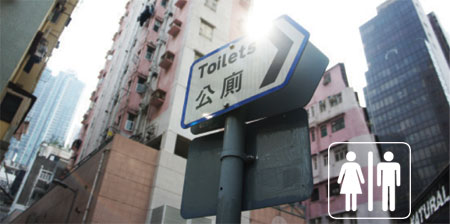
|
Notices on the wall of a public toilet. Where Hong Kong stands out is the way it has maintained and expanded its network of free, government-operated public toilets. |
|
An underground public toilet. There are 1,606 toilets in Hong Kong's streets and parks, not including those operated by the MTR, shopping malls and privately-operated wet markets. |
|
A "five-star toilet" near tourist site Lam Tsuen Wishing Tree, where a HK$2.8 million was spent. The government has been criticized for spending too much on Hong Kong's public toilets. |

(HK Edition 08/30/2012 page4)
